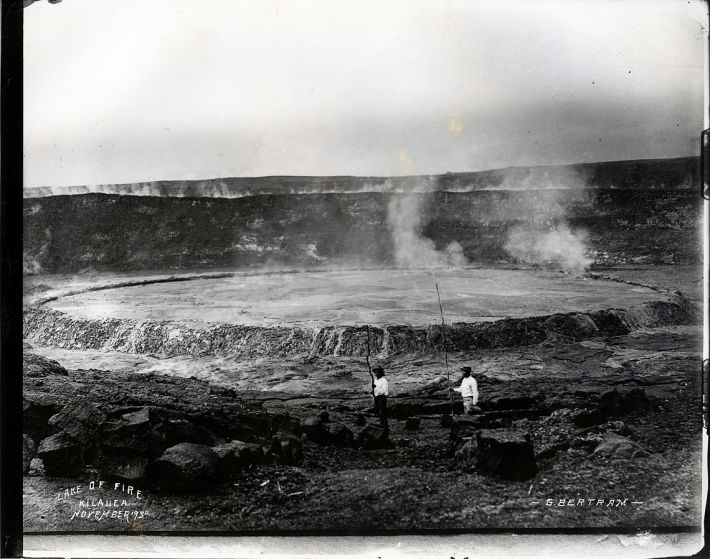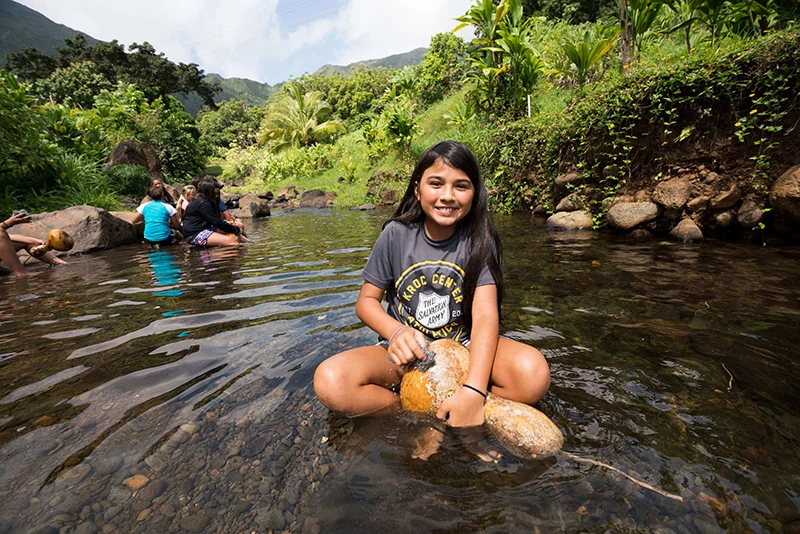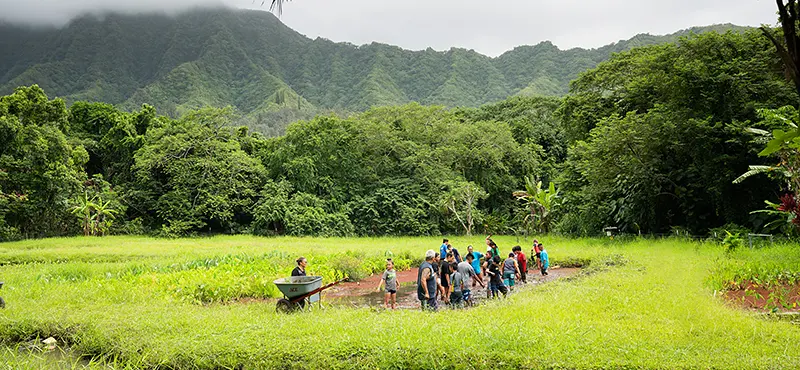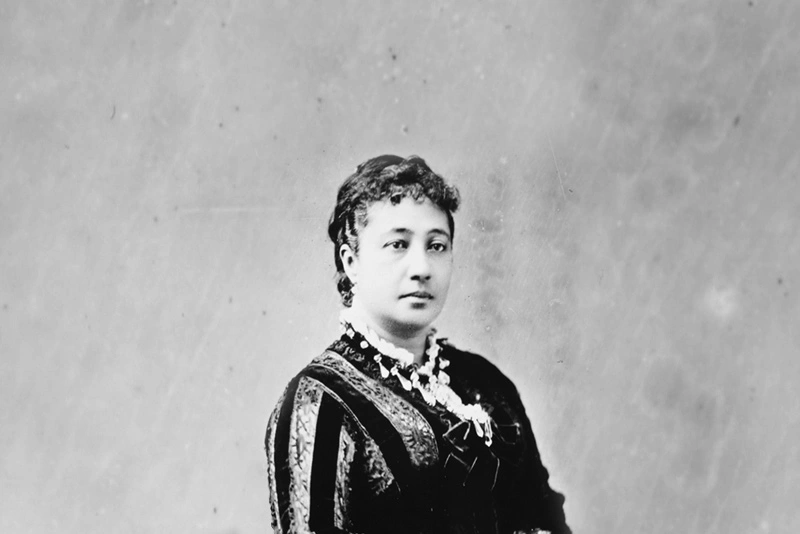In this Kūkahekahe, we share a bit about the akuawahine (goddess) Pele.
Ke hea mai nei Halemaʻumaʻu, ‘enaʻena i ke ahi a ka wahine.
Halemaʻumaʻu is calling, so hot with the fire of the woman (Pele).
—“Maunakea” (Traditional mele, Makaainana, September 17, 1894)
Kīlauea, the most active volcano on the island of Hawaiʻi, began erupting anew in late September. This eruption is unfolding at Halemaʻumaʻu, Kīlauea’s summit caldera. Some open fissures sent fountains of lava arching towards the heavens. Other fissures oozed lava and created a lake of molten rock within the caldera. There’s no telling how long the current eruption might last, where the flows might go, or what they might consume. What we do know, however, is that this volcanic activity indicates the constant presence of Pele, akua wahine (goddess) of volcanoes.
Some moʻolelo tell us that Pele traveled from faraway Kahiki, her homeland, to Hawaiʻi with some of her sisters and brothers. Her waʻa Honuaiākea was guided by her brother Kamohoaliʻi, a revered shark god. Upon reaching the northernmost islands in Hawaiʻi, Pele began digging on the land with her ‘ōʻō. She needed a deep lua (pit) to dwell in and protect her fires. But her sister and nemesis, Nāmakaokahaʻi, goddess of the ocean, flooded Pele’s attempts to create a fiery home with a barrage of waves. Pele tried again and again to dig a pit, moving east across the paeʻāina (archipelago) and encountering Nāmakaokahaʻi each time. At last, Pele finally found succor at Halemaʻumaʻu, Kīlauea, Mauna Loa, Hawaiʻi.
Even after making her home in Halemaʻumaʻu, Pele’s rivalries and fights with other akua would continue. This included a volatile relationship with the half-man, half-pig kūpua (demi-god) Kamapuaʻa. Their complex pilina finds some resolution by dividing the mokupuni of Hawaiʻi in half. The leeward moku (districts) of Puna, Kaʻū, and Kona are Pele’s domain; the koʻolau (windward) areas of Kohala, Hāmākua, and Hilo are Kamapuaʻa’s.
Our kūpuna recognized geologic events and attributed them to Pele and her various behaviors and moods. Even when Kīlauea is not actively erupting, molten rock bubbles and churns underground, sometimes causing ʻōlaʻi (earthquakes) or ground swells. And to the southeast of Kīlauea, deep below the ocean’s surface, new land is emerging. What scientists once believed to be an old, extinct volcano is actually a young, active volcano. This seamount is known by the names Lōʻihi (long) and Kamaʻehu (the red island child of the akua Haumea and Kanaloa). Hundreds of thousands of years from now, Kamaʻehu may breach the surface of the ocean. It could be an island unto itself, or it might grow and connect to Hawaiʻi.
Kānaka (Hawaiians) have long commemorated Pele through mele that speak of her home at Kīlauea, her power of simultaneous creation and destruction, and the beautiful energy of her dancing in fountains and flows of pele (lava). One line of the mele “Aia lā ʻo Pele i Hawaiʻi” asks “I hea kāua e laʻi ai – Where will we find peace?” Perhaps peace is found simply by paying attention to constant shifts in the land. Sometimes Pele expands to cover existing lands or extinguishes plant and animal life while also making way for new growth. In our lifetimes, Pele’s ‘āina will always be in flux.
Huaʻōlelo huli honua – Geology vocabulary
Many huaʻōlelo Hawaiʻi related to geology and volcanic activity are tied to Pele.
• pele: lava flow, volcano, eruption; volcanic
• kūkaepele: sulfur, brimstone
• ‘ā pele: lava rock, lava flow
• luaʻi pele: volcanic eruption, lava
• lauoho o Pele: Pele’s hair (volcanic glass fibers)
• waimaka o Pele: Pele’s tears (volcanic glass droplets)
• pōhaku Pele ‘ōmaʻo: basalt rock with olivine

An early photograph of a lake of fire in Halemaʻumaʻu by Brother Bertram taken between 1883 and 1905.
TAGS
kūkahekahe,pele,volcano
CATEGORIES
Kaipuolono Article, Regions, Themes, Culture, Community, Hawaii Newsroom, KS Hawaii Home, Kapalama Newsroom, Kapalama Home, Maui Newsroom, KS Maui Home, Newsroom, Campus Programs, Hawaii, Kapalama, Maui, Community Education, Hawaii campus, Kapalama campus, Maui campus
Print with photos
Print text only










